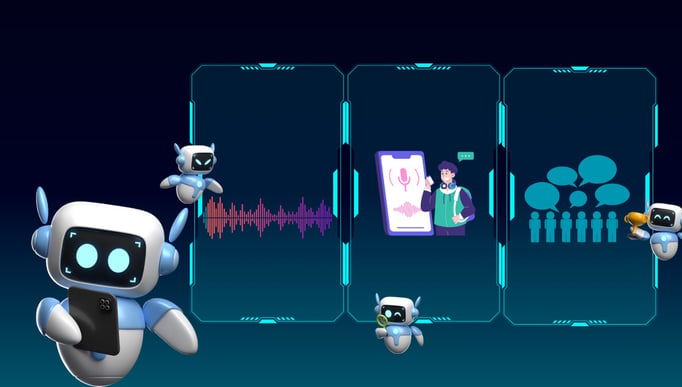Exploring the Power of Text-to-Speech (TTS) Conversion in AI
ARTIFICIAL INTELLIGENCE
5/4/20242 min read


Text-to-Speech (TTS) conversion is one of the most revolutionary technologies in the field of artificial intelligence (AI). Through the use of TTS, computers can now transform written text into speech that sounds natural, closing the comprehension gap between written knowledge and human comprehension. These days, the technology has advanced greatly and has a wide range of uses in several fields and sectors.
The development of TTS technology:
Earlier TTS systems generated repetitive, robotic voices devoid of expression and natural intonation. But advances in neural network topologies and deep learning have revolutionized TTS, making it possible to generate speech that is strikingly similar to that of a human. These contemporary systems use methods like WaveNet and Tacotron, which generate high-quality synthetic speech by modeling speech waveforms and text-to-spectrogram mappings, respectively.
Applications Across Industries:
Accessibility:
TTS is essential for providing people with vision impairments or reading issues with digital content. Screen readers enable users to explore websites, documents, and applications by vocalizing text displayed on screens through the use of text-to-speech (TTS).
Virtual Assistants:
To provide answers and communicate with users orally, well-known virtual assistants such as Siri, Google Assistant, and Alexa rely on text-to-speech (TTS). The user experience is improved and interactions with AI helpers are more engaging and intuitive thanks to the realistic-sounding voices.
Language Learning:
By giving students auditory pronunciations of words and phrases, TTS technology helps students learn languages more easily. TTS is used by language learning apps to provide users with immersive language experiences and customized feedback.
Customer service:
To answer questions from customers and offer round-the-clock support, several companies use chatbots and virtual agents with TTS capabilities. These systems improve the scalability and effectiveness of customer support operations by effectively translating text-based consumer queries into spoken responses.
Content Creation:
Written articles, blogs, and e-books can be turned into audiobooks or podcasts by content creators using text-to-speech (TTS). They may now reach a wider audience and satisfy those who would rather listen to their content this way.
Future Directions:
With continuous research aimed at enhancing the naturalness, expressiveness, and adaptability of synthetic speech, TTS technology is expected to continue advancing. Multilingual and code-switching text-to-speech (TTS) systems, which can switch between languages and dialects with ease, are promising for international communication and linguistic diversity.
Furthermore, more individualized and sympathetic interactions between people and AI systems may be made possible by personalized TTS models that are trained on certain voices or speaking patterns. Researchers and legislators should also pay attention to ethical issues related to possible abuses of TTS technology, such as voice cloning and deepfake audio.
In conclusion, text-to-speech (TTS) conversion is proof of the amazing advancements made in artificial intelligence (AI)-driven natural language processing. TTS technology has impacted many facets of contemporary life, from improving communication and accessibility to enabling virtual assistants and content production. With further growth in this area of study and research, TTS has enormous potential to advance human-computer interaction and expand the definition of synthetic speech in the future.


